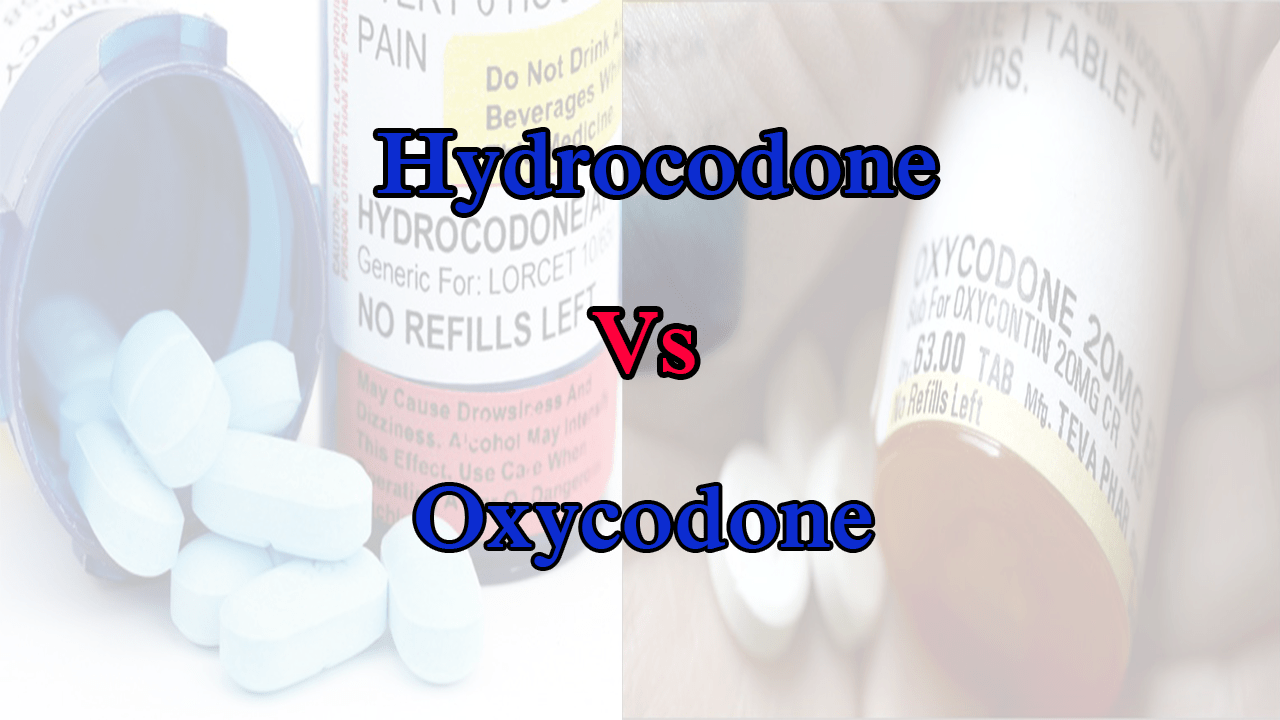When it comes to drugs in America and abroad, it’s not always the illegal substances that cause the most trouble. Rather, it’s sometimes the prescription medications that can get people into a lot of trouble. Unfortunately, it’s not always those who are seeking a ‘buzz’ or a ‘high’ from medications that are getting addicted. Rather, it’s the guy next door who fell and needed pain medication to cope with therapy. It’s the young woman who was in a car accident and now needs pain medication to help her get through the day. But those pain medications continue to get stronger and stronger, which is where both hydrocodone and oxycodone come in.
Table of Contents
What is Hydrocodone?
Also known as Norco and Vicodin, hydrocodone is a form of acetaminophen, but it’s much stronger than what you would find in the store or available over the counter. Rather, this medication is prescribed for those who are suffering from moderate or severe pain. It’s a mixture of a non-opioid pain reliever and an opioid pain reliever, which is where it gets some of it’s most dangerous features. Designed to help adjust your brain chemistry to reduce and change the way the body treats the pain that it feels, it can become an extremely dangerous medication.
Those who already have substance abuse disorders are even more likely to develop an addiction to hydrocodone, but anyone can. In fact, a large number of people have and continue to develop addictions to this strong medication. The longer an individual is taking the medication and the higher the dose that they take the higher the risk for addiction as well. All of these are reasons that doctors have started to crack down on hydrocodone prescriptions.
What is Oxycodone?
Oxycodone is also known as Roxicodone, and it’s an opioid pain medication. Used to treat moderate and severe pain, this medication has none of the non-opioid pain reliever that you’ll find in hydrocodone. That means it’s a pure opioid or narcotic and this can make it extremely dangerous for anyone to take. It works by changing the way that the brain responds to the pain that it experiences and as it’s extremely strong, it’s a medication that has started to come under intense scrutiny. In fact, with the increase of the opioid epidemic, there has been a lot of talk about banning this medication entirely.
Anyone who already has a substance abuse disorder is definitely more likely to suffer from addiction to this medication, as well as those taking it for an extended period or in high doses. Unfortunately, however, opioids have an extremely high addiction rate no matter what other factors are at play. That means even someone who has never had an addiction problem and isn’t taking a high dose is at risk for becoming addicted. Doctors and even lawmakers are starting to take a much closer look at this medication and just who it should be for.
Where They’re the Same
When it comes to similarities the most important one is that both are pain relievers. Both of these medications are used to treat moderate to severe pain and both contain an opioid in them that’s used to do this through the adjustment of the brain. As a pain reliever, both of these medications are quite successful and they tend to do an excellent job at helping patients to overcome the pain that they are experiencing. This can become a problem, however, as the removal of the pain seems to come at a price for many users.
The next similarity is that both of these are being prescribed by a large number of doctors around the world. The increase in prescriptions has been well documented and it’s starting to become a cause for concern amongst many people in the general public. The idea of police officers carrying medications to reverse drug overdoses has led to more and more people looking at how often these opioids and similar products are being prescribed and advising against them. After all, the increasing numbers of prescriptions are leading to an even bigger problem.
Both are addictive substances. It is possible for anyone to become addicted to hydrocodone or oxycodone and once addicted it can be extremely difficult to break that addiction. Someone who has taken either of these medications, especially for a long time, may experience withdrawal when they attempt to stop taking them. If a doctor removes the prescription and with it the easy access to the drug it can also lead patients, now addicted, to start looking for other alternatives and can lead to some serious problems for even those who have never experienced a problem in the past. But leaving patients on these medications can be extremely dangerous too.
Finally, both of these medications are beginning to see a decrease in their prescription rates as more and more people encourage legislation that bans or severely limits the use of opioids of any form. Both of these medications can become addictive and that’s part of the reason that so many people and even lawmakers are starting to look for ways to reduce their use in general society. New laws and regulations have made it more difficult to get these types of medications and have severely punished doctors who over-prescribe them. All this as these drugs continue to lead to more and more addictions that are ruining lives and even taking them altogether. Addiction is a terrible disease and when it comes to these drugs it’s one that doesn’t discriminate in the least.
How They Differ
When it comes to differences, hydrocodone has a mix of an opioid as well as a non-opioid pain reliever. These two things together are used to treat the pain. But it is actually prescribed in very similar ways to oxycodone and has therefore led to a large number of people becoming addicted. In some ways, it seems to be even more of a problem for those who are prescribed it and there may be evidence that it has an increased risk for dependency than standard oxycodone, which is actually fully an opioid without the other aspects added into it. Hydrocodone is the most misused opioid in the United States.
When it comes to drug schedules these two drugs used to have different ones, but now they’re being treated in the same way and the classifications have been changed (so this one may belong in the last category). Both of these are considered Schedule II drugs, which means they are highly addictive and have a high likelihood for misuse but they also have a medicinal benefit, primarily the fact that they can relieve pain and seem to be quite successful at doing so. This makes them better than Schedule I drugs that are considered to have no medicinal or other value.
When it comes to potency, oxycodone taken with acetaminophen is actually found to be much stronger than a mixture of hydrocodone and acetaminophen. This can be extremely dangerous and it’s also one reason for changes in the effectiveness in the drug. Some studies, however, have found that the two are equally good at treating pain and seem to provide relief in much the same way. More research is definitely needed in order to find out what these medications can do and whether or not one of them is actually more effective than the other.
Side effects are common with both of these medications, however oxycodone is more likely to cause side effects that include dizziness and drowsiness. You may also experience headaches, euphoria and fatigue. On the other hand, hydrocodone seems to cause constipation and stomach pain more frequently. Both can cause nausea, vomiting, dry mouth, itching and even seizures or rapid heartbeat. But these are only a few of the many different side effects that you could experience and only a few of the reasons that these medications are treated the way they are, as extremely dangerous and addictive substances.
How Addiction Occurs
Addictions can occur in a very short amount of time and that’s what makes both of these medications so dangerous. Taking them for even a short time can lead to your body developing a tolerance for them. Just like anything else, as you start to develop a tolerance it means you have to take more in order to get the same effect that you did before. For those who are suffering from pain it means that they need more of the pill in order to experience a lessening in their pain. When they take more, however, it causes an increase in the brain changes that occur with the medication.
As the brain changes more and more, your brain actually releases dopamine, which tells your body that the drug is important. Instead of getting rid of it and trying to find ways to make sure you don’t take it again, your body decides that it wasn’t the drug and needs more of it. As a result, you experience an addiction and you through whatever you need to go through in order to get more of it. This could mean taking higher and higher doses, without even telling your doctor what you’re doing.
Once an addiction occurs it’s crucial that you get professional help to try and break it. Going at it on your own is a good way to end up struggling hard and possibly even failing, again and again. Instead, talking with someone else, even if that person can’t talk back (like a pet or an infant), can be a great experience and a healing moment for you. But finding someone that can help you through detox and through your recovery path is going to be even more important. Because it’s easy to fall back into what’s normal. Moving on to something new and exciting is dangerous and can be nerve-wracking.
Getting Help For an Addiction
If you or someone you know is experiencing an addiction it’s extremely important to get help as soon as possible. You want to make sure you call the professionals and get them to take care of things. It can be terrifying to let a friend or loved one go through this type of experience alone or even to go through hit yourself alone. But when you realize that there are so many people around you and each of them is willing to help you along you’re going to feel a whole lot better about it.
The first step to anything is admitting there is a problem and then seeking out professional help. Addiction is not something that you should ever go through or attempt to overcome on your own. Addictions to strong narcotics and opioids like these especially should never be stopped without someone there to help you along. They can be extremely dangerous if you have an addiction and try to stop on your own. Working with the professionals will allow you to wean yourself off the drug and to do so under supervision.
Once you’re working on overcoming your addiction you may also want a mental health professional or an addiction support group that you can talk to. They may be able to help you overcome some of the mental aspects of the addiction you are facing.
Conclusion
With either one of these drugs addiction can be a very real possibility and it’s crucial that if you are prescribed either one of them you are careful about following the doctor’s prescription and talking with the doctor if there is any kind of problem along the way. Far too many doctors prescribe these medications and don’t take adequate precautions or alert their patients about the dangers. By understanding what they are and what can happen from the start you’re going to be better prepared and may be able to help yourself or someone you know avoid addiction. But even knowing the risks can’t keep you protected entirely and the best thing you can do, or anyone, is to avoid these opioids altogether.





